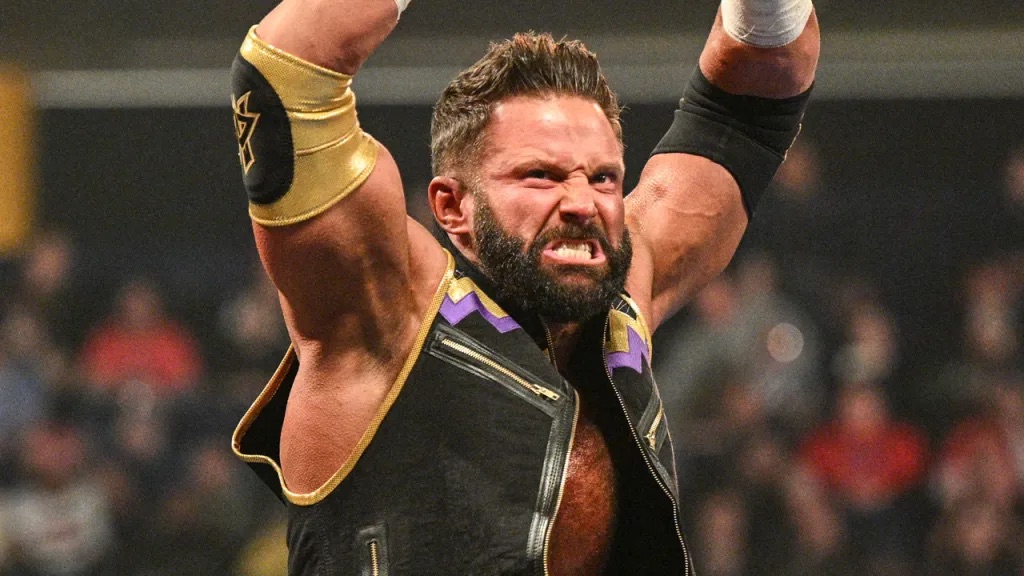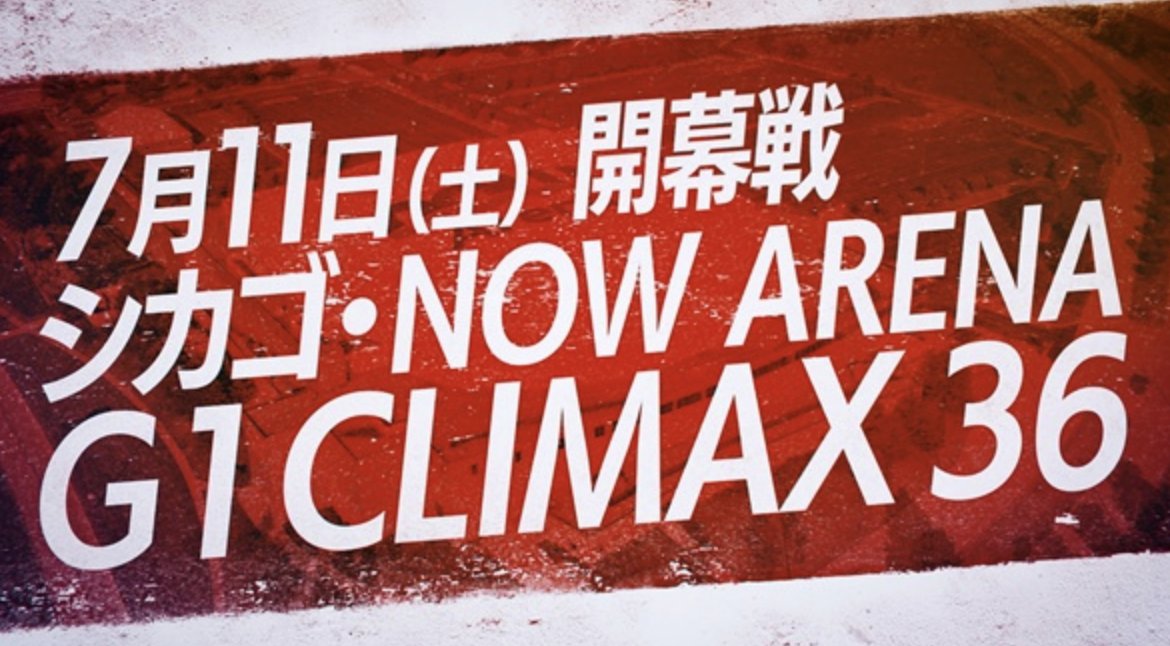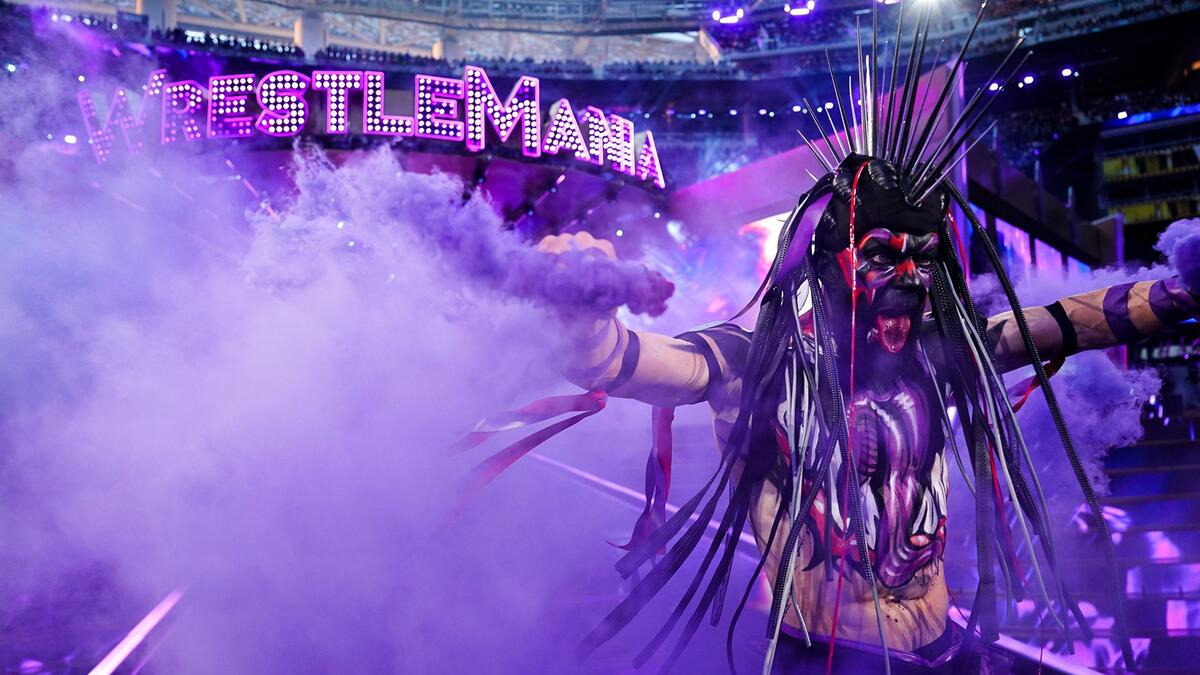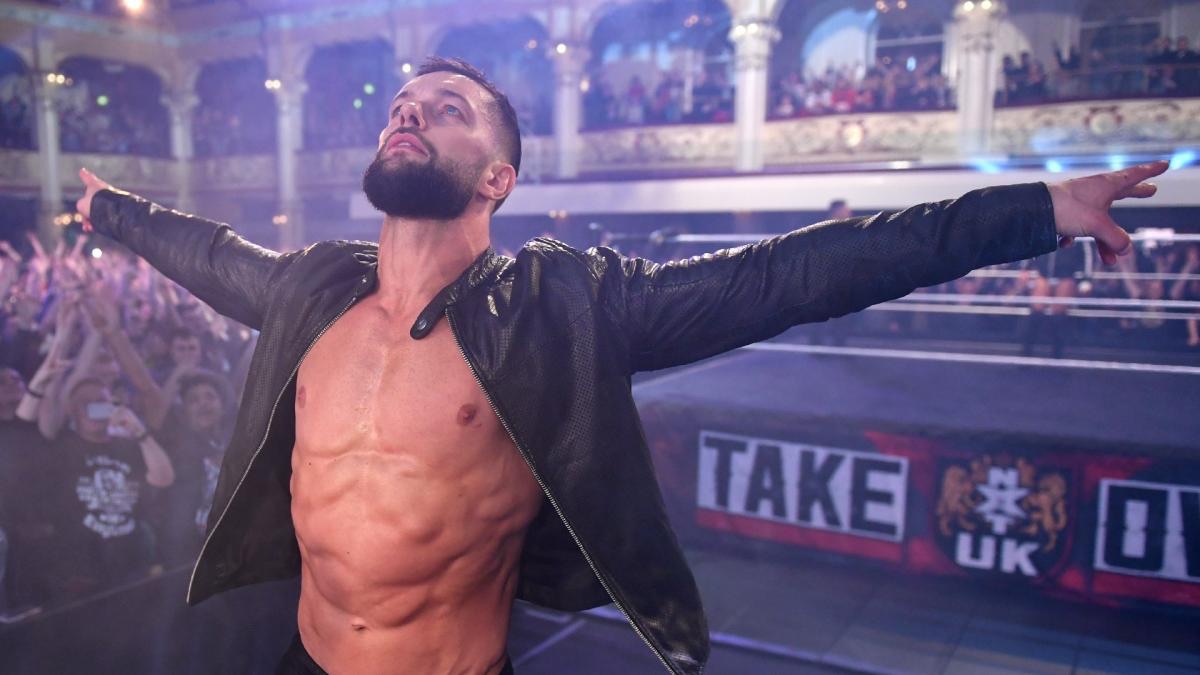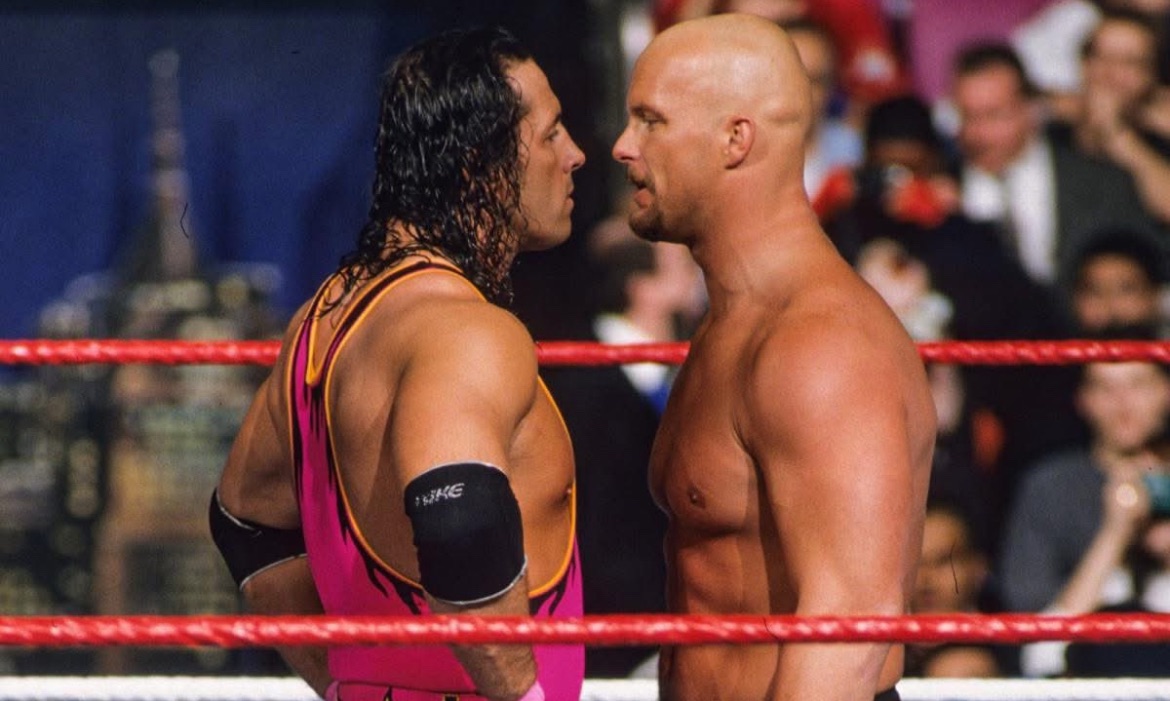Well, you made it! Somehow, you’ve all fought through two excruciating weeks without Hulbert’s Weekly Match Guide but at last, it’s back! What a week to return to also, as NJPW produces their biggest show of the year: Wrestle Kingdom 18, LIVE from Tokyo Dome. Before that though, both TJPW and Stardom produce major hits of their own while elsewhere, AEW kicks off 2024 with two television triumphs.
Clearly, we have a lot to catch up on so with that, to the graphics!
Darby Allin vs. Konosuke Takeshita (AEW Dynamite)
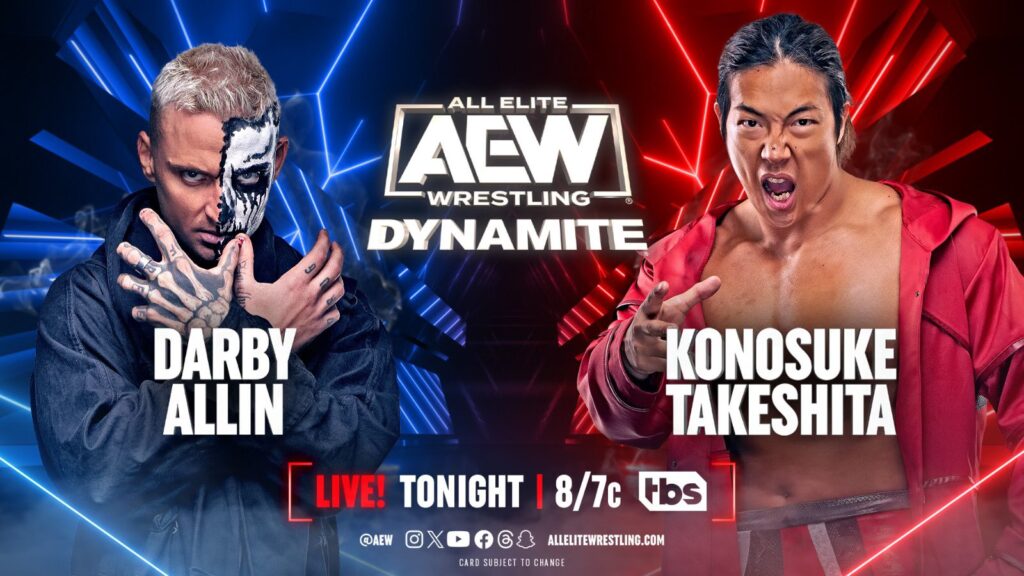
It’s a time of change in All Elite Wrestling but even still, some building blocks remain immovable. The promotion’s most reliable formula returned to action on the first Dynamite of 2024, as Darby Allin again played human crash test dummy. It was a necessary outing in that regard too, reiterating Konosuke Takeshita’s frightening potential after a shaky few months. Takeshita has been protected since turning heel at Double or Nothing, it’s just often been in the background.
Even with major wins over Kenny Omega, Takeshita has seldom felt central to AEW TV, with this being his first singles match on Dynamite since June. Even that was a mere enhancement match, going just 90 seconds prior to a Don Callis in-ring promo. Before that, you have to go all the way back to February, and Takeshita’s memorable shootout with MJF. The result is a complicated 2023 for the former DDT ace, with this match serving as an unofficial reboot.
It doesn’t exactly subvert expectations in that sense either, playing out exactly as the graphic would suggest. Within seconds, Takeshita is hurling Allin around, establishing his power advantage in the initial wrestling exchange. Allin responds by utilising some speed, with that dynamic leading them to an early standoff. Things quickly trend in the direction that you’d expect though, with Takeshita’s timing providing a brick wall for Allin’s speed to charge into.
Even before that, it’s an encouraging heel performance from Takeshita, who’s had ups and downs in that role since turning. He takes an early shortcut with strikes and briefly grabs a hold to boot, giving a fleeting preview of the control segment ahead. Once it arrives though, the highlights certainly don’t halt, with Takeshita destroying Allin in almost comical fashion. Allin is a unique babyface in that sense, as he often takes the kind of beating that you can only laugh at.
It’s about all you can do, as the response is often more disbelief and horror than encouragement and sympathy. That’s where Allin’s true skill shines brightest though, always selling wonderfully once the car crash concludes. In-between the thrills, Takeshita doesn’t even have to do much with his time in control here, as Allin makes each and every offering count. Once it’s time for Takeshita to sell, Allin ensures that it’s worth his while too, packing a serious punch with his comeback.
It’s a brief comeback too, almost immediately transitioning to another Takeshita near fall. Allin’s openings are neatly placed throughout, feeling like a result of the chaos more than any sustainable edge. Takeshita’s answer is always nearby and provides the match with a sense of inevitability, as it’s often trending in one direction. Even still, Allin manages some believable near falls, serving as a final show of life that doesn’t even slightly undercut Takeshita’s dominance.
As a result, the match is a home-run for him, kicking off his 2024 in style. Quietly though, it’s another example of Allin’s value, AEW’s seemingly indestructible demon that on any given night, can revive a wrestler whose push is failing him. It’s a simple formula and has been for years now, yet it remains one of AEW’s most reliable plays. TV wrestling doesn’t get much better than this, a purposeful thirteen minutes that thrills en route to its destination, a total triumph.
Masha Slamovich vs. Miyu Yamashita (TJPW Tokyo Joshi Pro)

In May 2022, Masha Slamovich and Miyu Yamashita battled for the first time, wrestling in Prestige. With just ten minutes or so, the pair shared a sprint, trading bombs and showing noticeable chemistry. The following April, West Coast Pro hosted a sequel, giving them more time for a match that while good, didn’t quite take full advantage of that space. Now in 2024, they meet again, with Slamovich arriving in Yamashita’s home promotion after two battles stateside.
This rubber match was set up by a tag match at Prestige and TJPW’s collaboration in LA, with Slamovich scoring a pinfall victory over Yamashita. While far from her first time in Japan, it’s clearly a significant opportunity for Slamovich, whose profile continues to climb. That significance is palpable in her performance, wrestling with even more intent than usual. Slamovich and Yamashita set the tone in that regard, sharing a purposeful lockup and struggling for control.
They seldom look back from there, producing a match packed with physicality. Slamovich steers the ship for much of this, particularly early, taking control with a gut-wrench on the apron. Considering that starting point, Slamovich does a fabulous job of maintaining that same intensity, wrestling relentlessly throughout. It’s a great example of how her archetype should convey a control segment, visibly chasing a finish and wrestling as though there will be no comeback.
That sounds obvious but too often, these portions feel merely like stalling, which certainly isn’t the case here. Instead, Slamovich takes advantage of the room given to her, absolutely relishing her role as dangerous outsider. Yamashita’s eventual comeback is neatly transitioned to also, arriving with an ill-advised increase in pace that opens the door for her. Yamashita’s typically thunderous strikes follow, chasing a finish of her own and matching the urgency of Slamovich’s success.
They effectively produce a race to the finish from there, with Slamovich frequently halting Yamashita’s emerging momentum. This match is a serious effort in terms of establishing her under the TJPW banner, standing up to some of Yamashita’s biggest bombs. Even at almost double the length, this is very much wrestled at the pace of their aforementioned sprint. If they’d gone any longer, a little more structural shape probably would’ve been necessary but as is, it’s just about right.
It’s an outright thriller, doing an awful lot for Slamovich while also kicking off Yamashita’s 2024 with an immediate hit. Best of all, this very much felt like the raw ingredients of their dynamic, as it’s a match that climbs incredibly high on sheer aggression and intent. If and when they meet again in this setting, they can add some detail to the matchup’s intricacies. For now though, this shootout is an electric watch, featuring superb work from both champion and challenger.
There’s a magic between these two, the kind that could and probably should be returned to frequently.
Mayu Iwatani vs. Syuri (Stardom Ittenyon Stardom Gate)
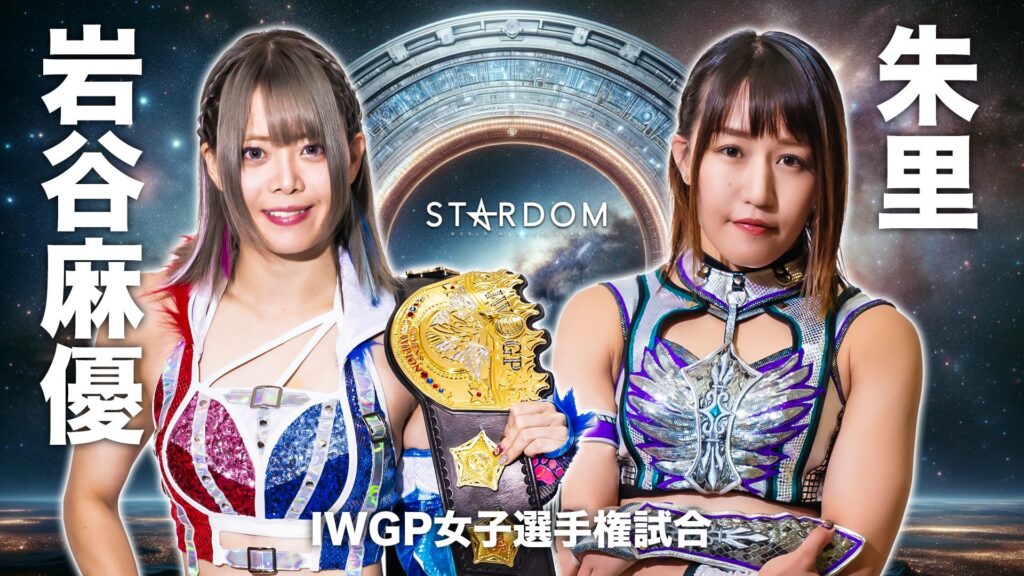
As Wrestle Kingdom came to a close, this match had earned as much buzz as almost anything on that card. Live prior to NJPW’s biggest show, Stardom produced an early match of the night candidate from Tokyo Dome City Hall, as Mayu Iwatani and Syuri battled for the IWGP Women’s Title. Since its introduction in late 2022, that belt has had a unique existence, being central to the Mercedes Mone project until Iwatani’s title win.
That came in April, with this being only the third defence since. Nonetheless, these two have shared three singles matches previously, with the first taking place in October 2020. Their 2022 sequel didn’t quite come together for me and with the rubber match taking place in the 5STAR Grand Prix, this latest encounter felt like the best chance to re-assess their dynamic. In terms of length, it falls between those two contrasts, actually clocking in closer to their tournament bout than the two prior title tilts.
There’s overlap in terms of content too, as that 5STAR duel was very much a shootout, with back and forth violence throughout. That clash of the titans approach carries over to this main event, almost serving as an extended cut. It’s daring and dangerous from the bell, as they set the tone early by immediately following a DDT on the floor with a suplex on the apron. It’s the kind of match that before long, leaves you wondering where they could possibly go next.
Without fail though, they have an answer, managing an escalation suited to their pace. It’s a hectic one too, becoming an offensive showcase within seconds. The quality of their work is very much the story, particularly during that first act or so, as everything arrives with such snap. It’s that elusive balance between smooth and sharp, flowing gorgeously but always arriving with palpable force. While it’s heavy on momentum swings, Syuri scores first, naturally positioning Iwatani to sell.
Admittedly, this match isn’t exactly a selling showcase, as little of the physical output truly sticks. However, they do portray the pace well, with Iwatani showcasing its effect in particular. That very much shapes the bout’s second half, as they increasingly wear the effects of those frantic exchanges. Tonally, the match shifts as they near the finish line, with the pace slowing as desperation and (more) violence takes its place.
That includes some sickening headbutts as well as a few glorious touches, including a superb rope-break near fall late. Everything feels last-ditch and instinctive, producing believable false finishes for the final five minutes or so. It’s an exhilarating watch, climbing high enough to escape the admittedly cold setting. While unfortunate, that atmosphere doesn’t really impact their direction, as the work speaks for itself, ticking just about every possible box along the way.
It’s very much a statement match in that sense, a clash of the titans affair that frequently swings from frantic to gruelling. At just shy of 20 minutes, it’s the right length for that shape too, climbing extraordinarily high yet still closing with something fittingly epic. Terrific match, the second best of January 4th.
Shingo Takagi vs. Tama Tonga (NJPW Wrestle Kingdom 18)
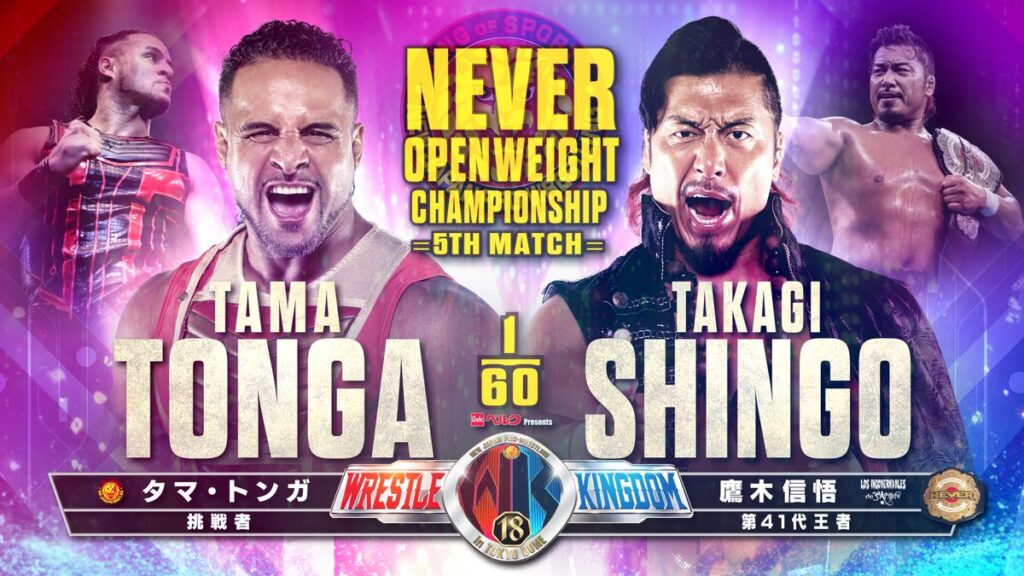
It’s somewhat ironic that after years of the faction defining his identity, Tama Tonga has quietly found himself since leaving BULLET CLUB. I say quietly because going any further would feel dramatic, as Tonga certainly still has his limits. With that being said, this felt like a scenario that’d suit his strengths. In October, he and Shingo Takagi battled in Las Vegas, with the latter leaving NEVER Openweight Champion. The match was, among many things, long.
That’s not totally fair, as it was a substantial effort for the setting but still felt hindered by its length. The title tilt was set up by a match that suffered from the same issue, going to a 20-minute time-limit draw in the G1. This wasn’t a tournament match though, nor was it a ‘PPV’ main event, instead playing its proper role as an undercard shootout. They have just shy of 14 minutes here, packing absolutely everything possible in that runtime.
Initially, it’s a pretty simple formula, and remains mostly familiar throughout. Effectively, it’s Tama Tonga plugged in to your traditional NEVER Openweight war. Forearms, shoulder tackles, suplexes, the usual. Offensively, that fit isn’t always perfect but for what he lacks in content, Tonga makes up for with believability and toughness. Either way, they put together some engaging enough building blocks, then exploding into a finishing stretch at around the halfway point.
It’s really tightly constructed, with Takagi’s firepower and Tonga’s athleticism combining neatly. The more snappy layout allows the near falls to actively build momentum, with each false finish building on the last. They also maintain a subtle stylistic clash along the way, with Tonga’s usual sequence bursts playing in opposition to Takagi’s more direct, crunchy offerings. Their pace really hooks Tokyo Dome too, earning genuine heat by the quite dramatic finish.
The final act is so pronounced here that even at this runtime, the match packs a noticeable punch, almost feeling like a miniature epic. In truth, it’s simply the right match for this pairing, and almost certainly Tonga in general. Even still, this does feel like an extreme example on that front, as the motivation is palpable. Their effort is befitting the occasion here, supplying increasingly familiar play calls with a pivotal passion.
That only increases as the people get fully onboard, coming to life in a fashion that the match graphic didn’t necessarily forecast. Nothing groundbreaking in concept, but an engaging watch that greatly exceeded my admittedly middling expectations. It’s the perfect undercard match for a show of this magnitude, maximising its minutes without sacrificing the prestige associated with more expansive outings. There’s a lesson to be learned there, though I doubt it’ll right any wrongs in that regard.
Either way, it’s a career-best singles match for Tonga, feeling more natural than ever in that role after an impressive few years. Takagi is a major part of that, obviously, simplifying things and forcing Tonga to lean on his natural strengths. It’s the ideal version of this match, playing perfectly on NJPW’s biggest stage.
Bryan Danielson vs. Kazuchika Okada (NJPW Wrestle Kingdom 18)
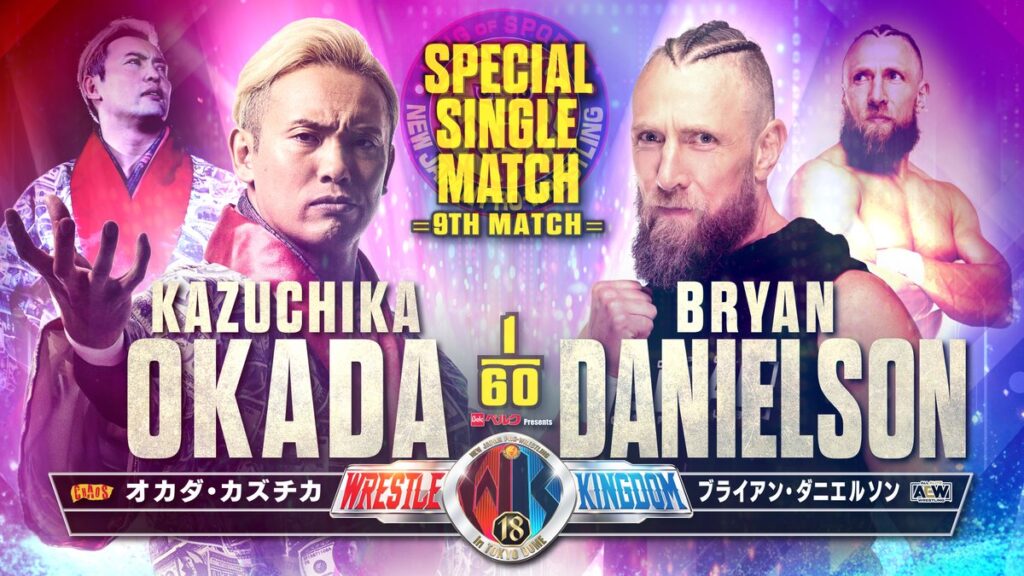
Just over six months removed from their understandably odd first meeting, Bryan Danielson and Kazuchika Okada battled again at Wrestle Kingdom. Their initial dream match had struggled to follow Kenny Omega’s war with Will Ospreay at Forbidden Door, then hitting a brick wall as Danielson was injured. This rematch was officially signalled by an October tag match on Dynamite, as Okada managed some revenge in damage and pride, even if not outcome.
Within moments, it’s a clear improvement on that first match too, taking clear directions from the bell. In that sense, it almost feels as though they were unlocked by the unique scenario, simply wrestling the match rather than its occasion. In June, this pairing had almost impossible expectations awaiting them, the ultimate modern dream match that people had already pencilled in as an instant classic. That novelty isn’t the focus here though, replaced by a very different magic.
The novelty this time surrounds Bryan Danielson’s presence in a NJPW ring, finally making that Tokyo Dome walk. It’s a surreal moment, though not one that they lean on for long. Instead, it’s a refreshingly focused match, even as their feeling out process allows that atmosphere to breathe. Anytime they hit the mat, Danielson is operating with palpable intent, picking up where he left off and seeking another submission win.
He seemingly wants a direct repeat in fact, veering towards the arm as Okada responds by injecting some pace. In the process, Okada chips away at Danielson’s injured eye, ultimately going far further in that direction as he finds himself cornered. Conceptually, it’s a very simple match in truth, reminding me of the Ricky Steamboat adage that picking a body part each is a reliable route to success. That approach swiftly highlights Danielson’s brilliance, producing some quite staggering limb work.
It doesn’t entirely stick on the sell and could, or frankly should, have proved more pivotal down the stretch but mechanically, it doesn’t get much better than this. He’s absolutely ruthless here, making every moment count and turning in a performance that’s spite is striking, even for him. It’s a showing befitting this occasion, quickly jumping off the page as a classic Danielson performance. He’s so perfect in fact that there’s a believable false finish even before Okada’s comeback.
Once that comeback arrives, Okada embraces the door that had been wide open all along, dispatching Danielson’s eye-patch and stomping away cruelly. It’s a brief segment, with Danielson quickly regaining control in a match that he takes much of. That imbalance is to the bout’s benefit, allowing it to escape the almost exhibition-style turn-taking that could’ve so easily defined this sequel. Instead, he’s a mountain for Okada to climb, forcing the ace to consider shortcuts for his own survival.
The finish does feel a touch abrupt, particularly as their rhythm almost demanded more. By that point, the match has come together to a degree that probably deserved something more grand to close. I’m torn on that front though, as there’s equally a charm to the match’s more modest conclusion. They don’t attach a familiar final act but instead, reach their own destination at just over 23 minutes. That’s not a sprint by any means, but it’s no epic by NJPW or Okada standards either.
That feels central to this bout’s flavour, embracing the matchup more than the moment. In that way, it feels like the Forbidden Door experience allowed them to simplify this dynamic. Rather than trying to be all things at once, this makes a clear choice as to the match that it wants to be. That match is a simple one too, relying on sheer skill rather than anything bloated or unforeseen. The result is an urgent clash between two of the greats, stealing the show as they go.
SANADA vs. Tetsuya Naito (NJPW Wrestle Kingdom 18)
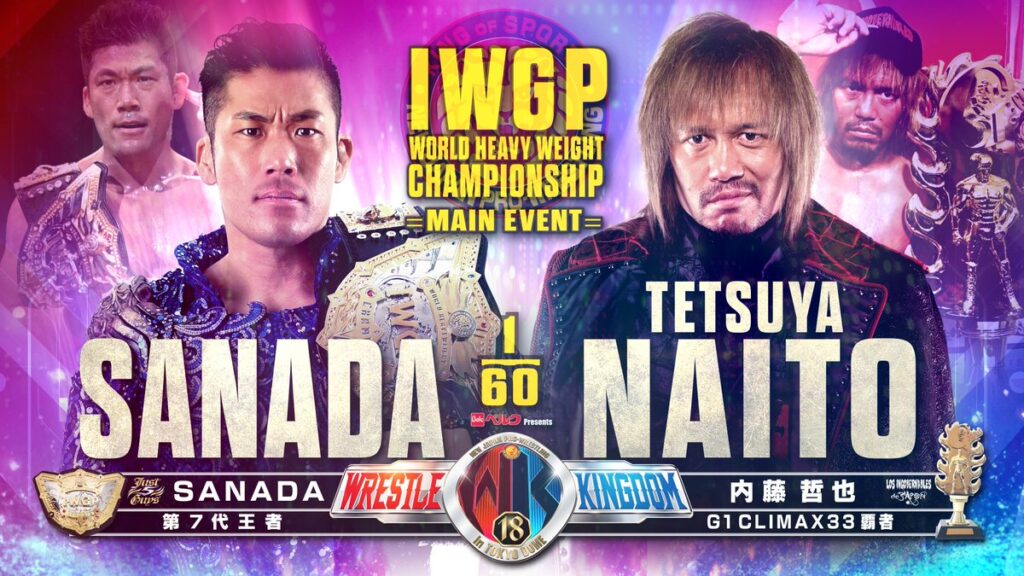
While a controversial choice for main event in some circles, it always seemed likely that under the brightest lights, SANADA and Tetsuya Naito would rise to the occasion. That’s been a theme of the latter’s work in recent campaigns, rolling back the years when and where necessary. It’s a switch that’s certainly flipped here too, though his real superpower remains that staggering connection with those in attendance. The result is a noticeable gravity to the match, a palpable tension at the bell.
Inside the ropes, Naito mostly colours inside the lines, especially early. He veers towards the neck, which is often central to his best work these days. They take their time prior to that direction too, with Naito’s sharp cutoff being preceded by some mat work to set the stage. Naito’s popularity allows them to embrace that main event cadence, letting things breathe in the first act. In addition, Naito’s first attempt at gamesmanship doesn’t effect SANADA, spitting in the champion’s face but remaining a step behind.
That quite neatly frames his early approach, wrestling smartly rather than relying on tricks. Naito is very direct here, wrestling with a tone befitting the occasion. While he’ll never be a house afire, that approach draws some aggression from SANADA too, operating with a refreshing scrappiness as they trade blows in the opening act. Once SANDA turns the tide, those in attendance are able to embrace their support for Naito also, rooting him upright as he struggles through an extended submission spot.
That momentum swing provides a bridge to more expansive offence, with both men then bringing some variety to the party, sprinkling in a violent bump or two along the way. The result is a really smooth escalation, with each individual piece suitably transitioning to the next. Unfortunately, the final stop of that route doesn’t arrive without issue, as their work hits a wall of sorts in the final act. They never lose the people necessarily, but do struggle mightily through a particular sequence.
Thankfully, they steady the ship before reaching the finish line, finding their feet to ensure that the conclusion packs a fitting punch. It certainly does too, giving the people what they want for an explosion at the count of 3. That investment does feel central to this match’s magic, and I don’t mean that as a slight either, as it’s quite clearly the point. Naito’s popularity was this match’s safety net for a reason, it’s what earned it the main event spot to begin with.
This works beyond that though, even if not to some unfathomable, extraordinary level. This never felt likely to climb high enough for year-end award contention anyway, so it’s an undeniable triumph for my money. They find a classical main event rhythm that isn’t extended beyond its limit at this runtime, building on the initial heat with logical shifts in momentum. That late bump in the road is unfortunate, but I think the match’s appeal is captured by how little it bothers Tokyo.
They’re forgiving of that stumble, then fully embracing the recovery as ultimately, this was about Naito’s ultimate happy ending. In a time where smooth execution is the increasing norm, I think that says an awful lot about what Naito has meant for this promotion. Physically, he’s not what he was but Naito is smart enough to navigate that as most importantly, the people love him all the same.
House of Black vs. FTR (AEW Collision)
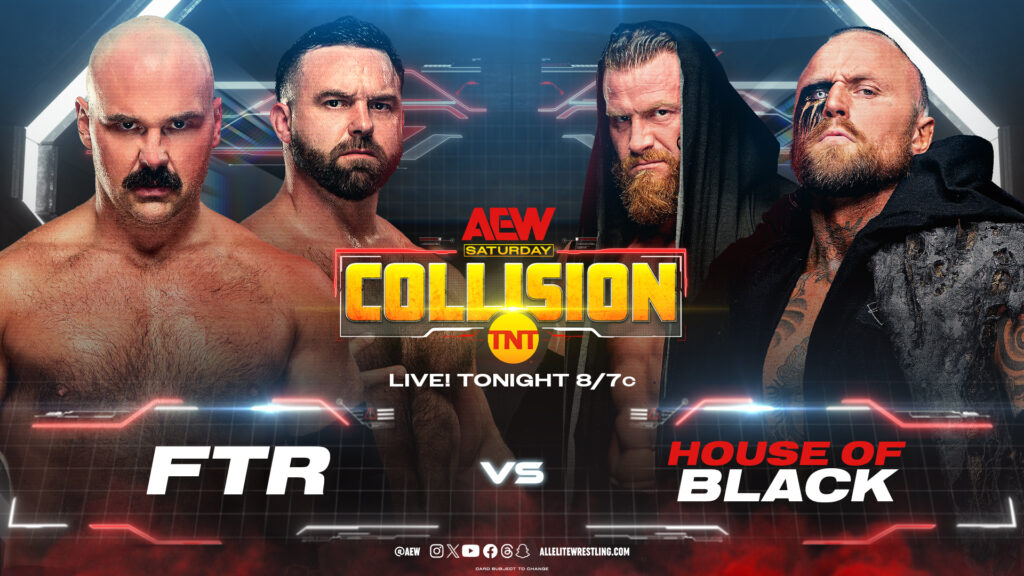
After a spotty build that seemed destined for Worlds End, House of Black and FTR instead closed the first Collision of 2024. As a result, The Collision OriginalsTM had time at their disposal, being armed with over twenty minutes in front of an enthusiastic Charlotte crowd. Fittingly, your view on those early Collision outings will likely translate to your take on this tag tilt, which explains my enjoyment. Certainly, it’s not without flaws, but this gets an awful lot right nonetheless.
Some of that is a credit to the creative, which hasn’t been a common compliment to either act’s usage. The decision to save this for Collision was a smart one, allowing it to breathe as a main event match rather than being just one of twelve on PPV. Charlotte, North Carolina is a beneficial host too, somewhat counteracting House of Black’s usual babyface reaction and mostly positioning FTR as the rightful babyfaces. I say somewhat and mostly as that’s not without a hilarious exception or two.
Nonetheless, they had to strike a very particular balance here, as the build demanded serious intensity from Harwood especially. They’d struggle to convey that in its rawest form considering the runtime though, forcing Harwood to portray it more subtly. He does a tremendous job in that regard, wrestling with palpable aggression and intent but visibly attempting to keep his cool. That’s the story initially, with Wheeler actively calming his partner after some House of Black mind games.
The direction positions them for some classical work early, as both Cash and Dax combine for snappy work opposite Buddy Matthews. It must be said that in that domain, Malakai Black often feels like the odd man out, though his presence makes for a worthy sacrifice. Stylistically, he feels a touch like a square peg in a round hole but unquestionably, there’s a power to his seemingly unwavering popularity, giving this a genuine main event atmosphere.
As they settle in some heat on Wheeler, the length becomes a bit of an issue. House of Black aren’t really suited to an extended heat segment as they’re at their best in the chaos of combination offence. I thought the same issue hindered their match with CMFTR, and it remains a slight hurdle here. In addition, there are some timing issues that emerge also, with the match getting a touch bumpy after that razor sharp opening.
Fortunately, Wheeler is a superb babyface in peril, keeping things on track until Harwood’s hot tag. An extended finish follows, including some of the cute sequencing that’s often present in FTR’s biggest and best hits. They don’t all land to absolute perfection here, at times almost overreaching for drama but there’s more than enough bursts of brilliance to keep it trending in the right direction. As a result, the finish lands as intended, briefly feeling legitimately triumphant.
It could use a trim and isn’t always perfect in execution, but this is a really strong TV main event. It’s close to ideal in that regard as they actually leave quite a bit on the table in terms of content, wrestling a mostly simple match until those final fireworks. Again, it’s hilariously on-brand for the Colliders on Collision, which is comfortably the most embarrassing sentence to ever feature in my guide. Seriously though, a good match that left me wanting more. To translate, just what the doctor ordered!

